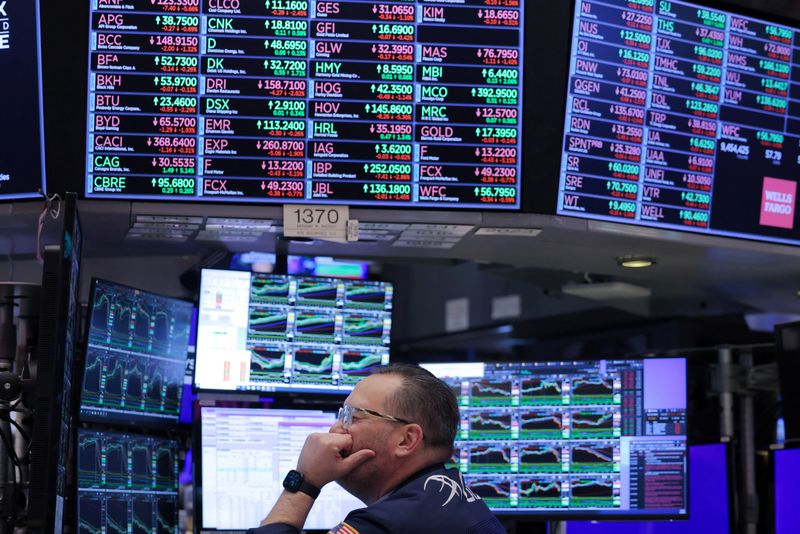Key Takeaways:
I. The Federal Reserve faces a challenging balancing act between controlling inflation, which remains stubbornly above its 2% target, and avoiding a recession, with the market potentially underestimating the risk of further rate hikes.
II. U.S.-Russia talks offer a narrow path to de-escalation, but the potential for a breakdown and subsequent economic disruption, particularly in energy markets, remains a significant threat.
III. Trump's proposed tariffs, particularly a 25% levy on imported cars, pose a substantial risk to the global trading system and could trigger retaliatory measures, leading to a significant contraction in global trade and economic growth.
The global economic landscape in early 2025 is characterized by a complex interplay of factors, each potent enough on its own, but collectively presenting a heightened risk of significant market disruption. The forthcoming release of the Federal Reserve minutes is anticipated with a mixture of trepidation and expectation, as investors seek clarity on the central bank's future monetary policy path amidst persistent inflationary pressures and slowing growth. Simultaneously, high-stakes talks between the U.S. and Russia hold the potential to either de-escalate or exacerbate existing geopolitical tensions, with direct consequences for energy markets and global trade. Adding to this uncertainty, former President Trump's renewed threats of sweeping tariffs, particularly on automobiles, inject a considerable dose of trade policy risk into an already fragile global economy. This is not simply a confluence of independent events; these factors are intricately linked, creating a feedback loop where a shock in one area can rapidly cascade across others. For example, a more hawkish Fed stance, driven by persistent inflation above the 2% target, could amplify the negative economic impact of escalating geopolitical tensions or a trade war sparked by new tariffs. The market's current valuation, particularly in certain sectors, appears to be underestimating the combined impact of these risks, suggesting a potential for significant correction.
Decoding the Fed Minutes: Navigating Monetary Policy Uncertainty
The upcoming release of the Federal Reserve minutes is poised to be a pivotal event for financial markets, offering crucial insights into the central bank's thinking on the trajectory of interest rates and its assessment of the economic outlook. Market participants are particularly focused on gauging the Fed's level of concern about persistent inflation, which, despite some moderation, remains above the 2% target. Core PCE inflation, the Fed's preferred measure, stood at 3.1% year-over-year in December 2024 (Bureau of Economic Analysis), indicating continued price pressures. The minutes will be scrutinized for any hints of a shift in the Fed's stance, particularly regarding the potential for further rate hikes or a prolonged period of restrictive monetary policy. Any indication that a significant number of FOMC members are leaning towards a more hawkish approach could trigger a sharp market reaction, particularly in interest-rate-sensitive sectors.
The Fed's challenge is compounded by the conflicting signals emanating from the economy. While inflation remains elevated, there are growing signs of a slowdown in economic activity. The Conference Board's Leading Economic Index (LEI) for the U.S. decreased by 0.4% in December 2024, marking the sixth consecutive monthly decline, suggesting a potential contraction in economic activity in the coming months. This divergence between inflationary pressures and slowing growth creates a policy dilemma for the Fed, forcing it to choose between prioritizing price stability and supporting economic growth. The minutes will likely reveal the internal debate within the FOMC about the relative weight to be given to these competing objectives.
Beyond the headline inflation figures, the minutes will be analyzed for the Fed's assessment of underlying inflationary pressures, including wage growth and supply chain dynamics. The Atlanta Fed's Wage Growth Tracker showed a 5.8% year-over-year increase in December 2024, indicating continued tightness in the labor market and potential upward pressure on prices. Furthermore, ongoing supply chain disruptions, exacerbated by geopolitical tensions and logistical bottlenecks, continue to contribute to elevated input costs for businesses. The Fed's view on the persistence of these factors will be crucial in determining its future policy actions. A belief that these pressures are likely to remain elevated could strengthen the case for further rate hikes, even in the face of slowing economic growth.
The market's reaction to the Fed minutes will depend not only on the content but also on how it aligns with or deviates from prior expectations. Current market pricing, as reflected in fed funds futures, suggests a roughly 60% probability of a 25 basis point rate hike at the next FOMC meeting (CME Group, early 2025 data). If the minutes reveal a more hawkish tone than anticipated, suggesting a higher probability of further tightening, this could lead to a significant repricing of assets, particularly in fixed income and equity markets. Conversely, a more dovish tone, emphasizing downside risks to growth, could provide a boost to risk assets. The degree of market volatility will likely be amplified by the already heightened level of uncertainty stemming from geopolitical tensions and trade policy concerns.
Geopolitical Risk: The Economic Fallout of U.S.-Russia Tensions
The scheduled talks between the U.S. and Russia represent a critical juncture in a relationship fraught with tension and mistrust. The outcome of these discussions has significant implications for the global economy, particularly for energy markets, given Russia's role as a major oil and gas producer. Any escalation of tensions could lead to further disruptions in energy supplies, driving up prices and exacerbating inflationary pressures worldwide. Conversely, a de-escalation could provide some relief to global markets and reduce the risk of a broader economic conflict. The primary points of contention include the ongoing conflict in Ukraine, cybersecurity concerns, and arms control agreements.
Europe's energy security is particularly vulnerable to any deterioration in U.S.-Russia relations. As of late 2024, the European Union still relied on Russia for approximately 30% of its natural gas imports (Eurostat), despite efforts to diversify its energy sources. Germany, Europe's largest economy, remains particularly exposed, with Russian gas accounting for roughly 45% of its total gas imports (German Federal Ministry for Economic Affairs and Climate Action). A complete cutoff of Russian gas supplies to Europe, while unlikely, would have severe economic consequences, potentially leading to industrial shutdowns, energy rationing, and a sharp recession. The impact would extend beyond Europe, affecting global energy prices and potentially triggering a broader economic downturn.
Beyond energy, the U.S.-Russia relationship has broader implications for global trade and investment. Sanctions imposed on Russia by the U.S. and its allies have already disrupted trade flows and created uncertainty for businesses operating in the region. Further escalation of tensions could lead to additional sanctions, potentially targeting Russia's financial sector or its access to international capital markets. This would further isolate Russia from the global economy and could have significant ripple effects, particularly for countries with close economic ties to Russia. The potential for cyberattacks targeting critical infrastructure also remains a significant concern, adding another layer of risk to the already complex situation.
While the upcoming talks offer a potential pathway to de-escalation, the deep-seated mistrust and conflicting interests between the two countries make a significant breakthrough unlikely. Previous attempts at dialogue have yielded limited results, and the underlying issues driving the conflict remain unresolved. Even a partial agreement on specific issues, such as arms control or cybersecurity, would be a positive development, but it would not eliminate the broader geopolitical risks stemming from the strained relationship. The long-term outlook for U.S.-Russia relations remains uncertain, and the potential for further escalation remains a significant concern for the global economy.
Trade Policy Uncertainty: The Impact of Trump's Tariff Threats
Former President Trump's renewed threats of imposing substantial tariffs on imported goods, particularly a proposed 25% tariff on automobiles, inject a significant dose of uncertainty into the global trade outlook. This proposal, if implemented, would represent a major escalation of protectionist trade policies and could trigger retaliatory measures from U.S. trading partners, leading to a damaging trade war. The automotive industry, with its complex global supply chains, would be particularly hard hit. The Peterson Institute for International Economics estimates that a 25% tariff on imported cars and auto parts could increase the average price of a new car in the U.S. by between $1,400 and $7,000, depending on the model and origin (PIIE, 2024 estimate). This would significantly impact consumer spending and could lead to job losses in the U.S. automotive sector.
The broader implications of Trump's protectionist rhetoric extend beyond the automotive sector. He has also suggested the possibility of imposing tariffs on other goods, including semiconductors and pharmaceuticals, further disrupting global supply chains and raising costs for businesses and consumers. The U.S. imported approximately $380 billion worth of semiconductors in 2024 (U.S. Census Bureau), highlighting the potential scale of the disruption. Retaliatory tariffs from U.S. trading partners, such as the European Union and China, are highly likely, leading to a tit-for-tat escalation that could significantly damage global trade and economic growth. The World Trade Organization (WTO) estimates that a full-blown global trade war could reduce global GDP by up to 2% (WTO, 2024 estimate). This underscores the significant economic risks associated with a return to protectionist trade policies.
Conclusion: Managing Risk in a Complex Global Landscape
The convergence of monetary policy uncertainty, geopolitical tensions, and the threat of renewed trade wars creates a highly complex and volatile environment for the global economy in early 2025. Each of these factors carries significant risks, and their interconnectedness amplifies the potential for negative consequences. The forthcoming Fed minutes, the outcome of U.S.-Russia talks, and the trajectory of U.S. trade policy under a potential second Trump administration will be crucial determinants of the economic outlook. Investors and policymakers need to adopt a proactive and diversified approach to risk management, recognizing the potential for significant market disruptions and economic downturns. This includes carefully monitoring economic data, assessing geopolitical developments, and developing contingency plans for a range of potential scenarios. The current environment demands a heightened level of vigilance and a willingness to adapt to rapidly changing circumstances. The $44 billion valuation of 'X' must be considered within this broader context of heightened risk and uncertainty, requiring a thorough assessment of its business model, competitive landscape, and vulnerability to these macroeconomic and geopolitical headwinds.
----------
Further Reads
II. Analysis: US-Russia summit ends in a partial victory for Moscow – and a reversal on Europe | CNN
III. Global Commodity Prices Level Off, Hurting Prospects for Lower Inflation

